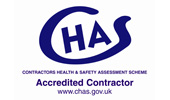How to screed a floor?
How To Screed A Floor. What Do You Need To Know.
I’m Andy Parkin, Managing Director of the Multi-Award Winning Speed Screed. I’m here to talk about how to screed a floor?
Levelling screed is one of the most popular ways to provide a smooth and strong surface that can take most types of flooring. This article will give you a basic idea of how to screed a floor, but if in doubt it always pays to search out a professional.
Choose the Screed
Do you want to use an unbonded or bonded screed? There are some pros and cons to consider including the fact that unbonded screed may curl. Bonded screed sits directly onto the base and this reduces the risk of cracking.
It is also less likely to curl but must be placed on an uncracked and strong base. You also need to pay attention to thickness: It should be within a 25-40mm range, if you go less than this it will affect the screed’s ability to bond with the base. If you are in any doubt consult a professional screeder.
How to screed a floor
Preparation for using unbonded screed
Make sure that the base is completed free of dust and grease and then cover the floor in a PVC sheet. This will keep the concrete and screed apart. The edges of the plastic layer should overlap and be taped together and you must extend them up the walls and pillars which should also be covered with compressible materials to avoid damage as the screed starts to dry and shrink. This type of screed can crack so using some kind of reinforcement is recommended to help prevent this.
Preparation when using a bonded screed
The concrete surface must be rough enough to allow the screed to bond and there are ways to expose the aggregate ranging from shot blasting to simply using a pick. Remove any paint, grease and dust and then vacuum thoroughly. Next, you can apply a bonding agent like PVA or similar per the manufacturer’s instructions.
You can choose to mix a cement grout but if you do you must make sure the screed goes down quickly because if the grout dries the screed cannot bond.
Screed applications
Ready-mix screed is available, although you can use your own mix, the ready-mix versions are always perfectly prepared and there are additives to make sure it doesn’t dry too quickly.
Assuming that you are using a ready-mix screed you need to section off the floor area which you can do easily using timber battens. Before you place them make them wet to stop them getting stuck in the screed.
Use a spirit level and once you are happy that the battens are placed correctly and are level you can move on to applying the screed. An alternative to battens would to use the screed in runs to obtain the levels and then infill.
Once you have applied and levelled the screed you need to cure it. The easiest way to do this is to cover it with a sealed polythene sheet and leave it for around 7 days. Once it has cured it will still need to be left for a few weeks to dry before you apply your final flooring.
Once you know how to screed a floor the process becomes a lot easier, however, it can be a daunting process. There are always professional screeders available that can give help and advice as to the type of screed you need and how it should be applied. We are here to help, contact us.
Our Accreditations
About Speed Screed
Speed Screed Limited was founded on the key principle of providing first-class customer service. It has since built itself an impressive reputation for delivering high-quality projects across the United Kingdom.
The company’s success is built on its belief in quality work, attention to detail, on-time completion, strong working partnerships and the recruitment of top-level staff. about us >








